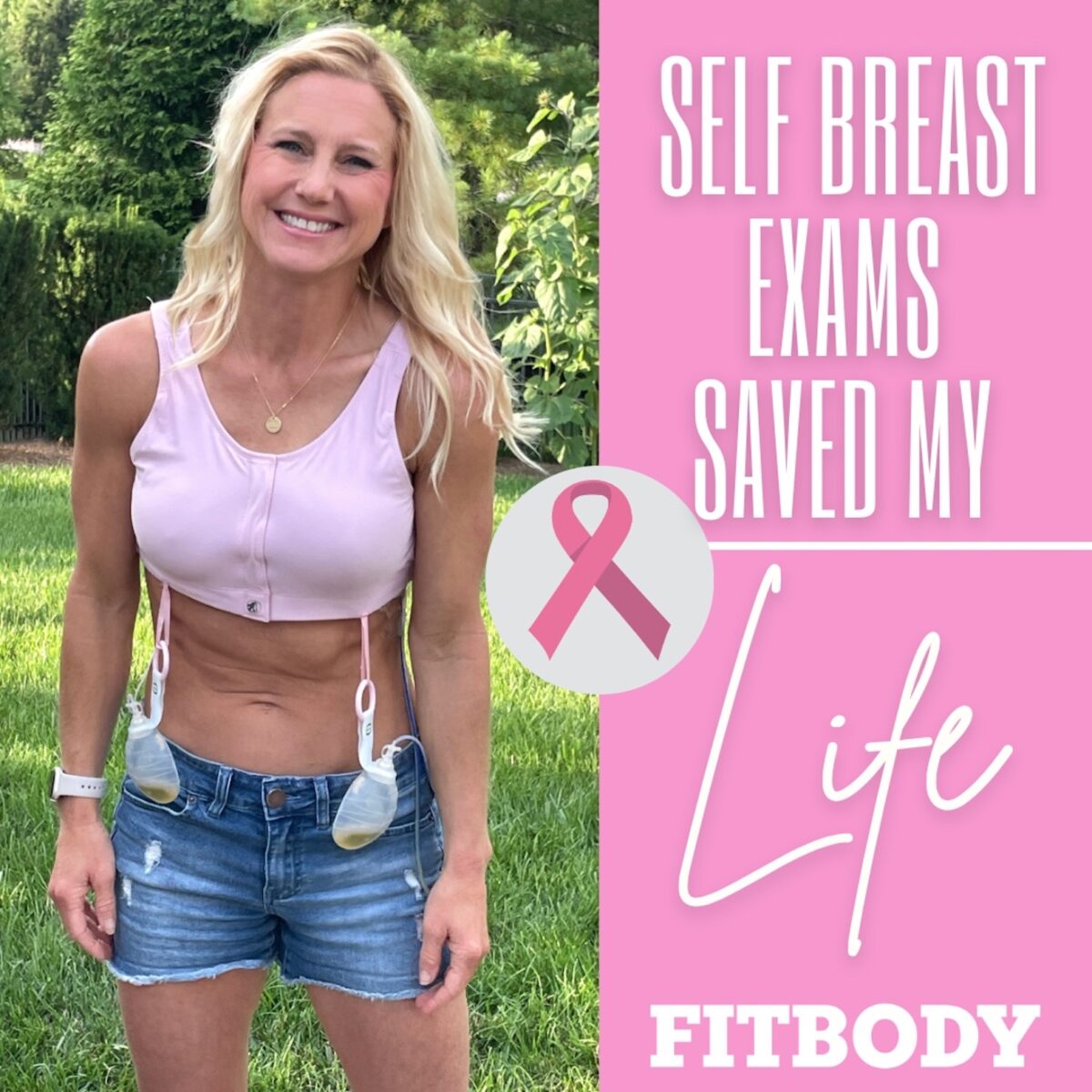Importance of Self Breast Examination…
How Self Breast Exams Saved My Life!!!
When I was first diagnosed with breast cancer – invasive lobular carcinoma – I was overwhelmed. I did not know who to turn to for information. When I received the news that I had breast cancer again, a new second primary breast cancer, this time invasive ductal carcinoma, I knew God had put this challenge in my life for a reason. I decided then and there to share as much of my story as possible so that other women get the news and have the fighting chance I have been lucky enough to have.
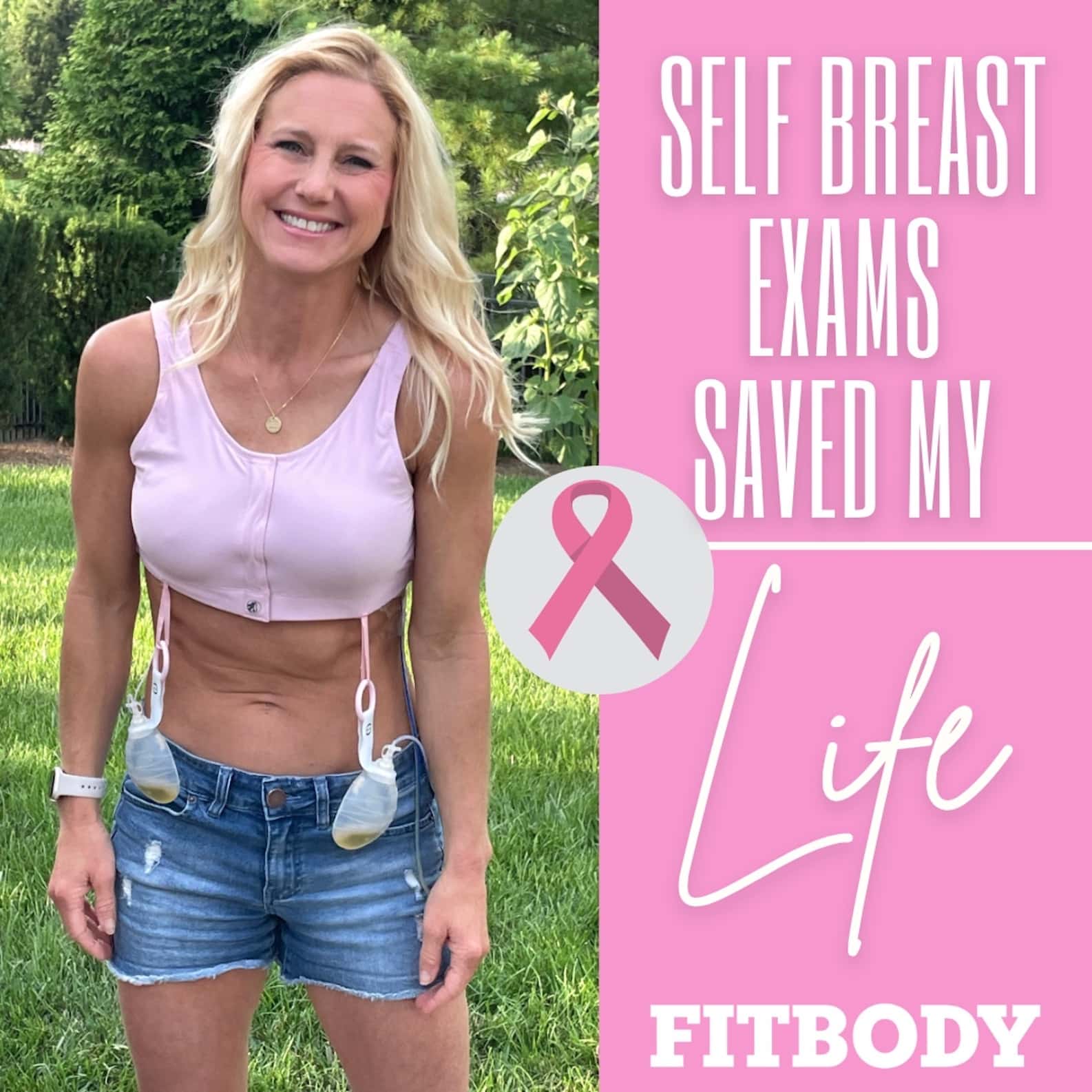
“I can not over-emphasize the importance of breast self examinations. In fact, I confidently tell you that doing monthly SELF BREAST EXAMS SAVED MY LIFE.“
Women’s Fitness Expert, Julie Lohre
The process has been trying at best, but there is a silver lining. I found my cancerous tumors early, still at stage one both times, giving me 5-year survival rates in the +95% range. THAT is the power and importance of self breast exams. Had I waited until these tumors were picked up on imaging or not brought them to my gynecologist’s attention, my story could have a significantly more dismal outlook. Advanced-stage breast cancer is treatable but presents significant challenges.
The good news… monthly self breast exams, in addition to routine mammograms, can save yours too.

Listen to the Podcast Episode
What is a self breast examination and why is it important?
Self Breast Examinations are a method of looking over and checking your own breast tissue both visually and through touch to see changes that occur over time. Being in tune with your body and noticing changes that happen over time provides more awareness of your breast tissue. Most breast changes are benign, or NOT cancerous. But, the importance of self breast examinations is that they can help you personally identify issues that need to be brought to your doctor’s attention.
When should breast self examination be done?
Because a woman’s breast responses to hormones, breast tissue tends to be more cystic or bumpy at different times throughout her cycle. This makes it difficult to discern unusual lumps from normal monthly variations. Those hormone changes can also lead to breast swelling with elevated estrogen levels. Those hormones are lowest at the end of her cycle. For women that are still menstruating and having regular periods, that makes the best time to complete a monthly breast self examination is about 3 to 5 days after her menstrual period starts.
Peri-menopausal or post menopausal women that no longer have consistent cycles, should pick a day each month and be consistent with that. I have been in peri-menopause for the last 2 years and made the first day of the month my self exam day. It is good to pick a day that you can remember easily like the beginning or end of a month or maybe the day of your birthday each month. Even better, do your self exams every 4 weeks so that you are on a 28 day schedule. Every 4th Saturday could become a self care day!
How to check for breast lumps?
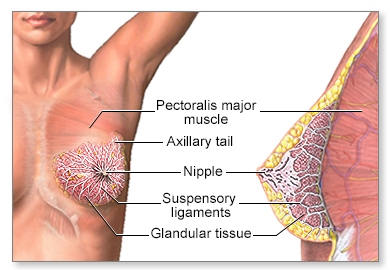
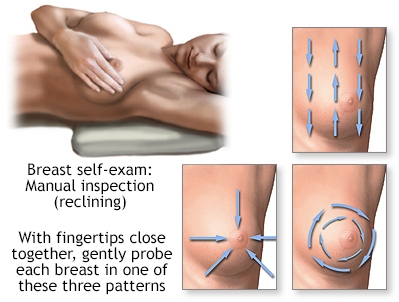
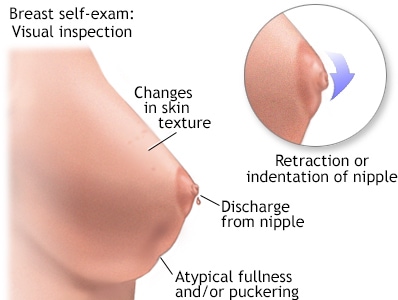
Making self breast examinations a regular part of your monthly routine is important as it allows you to become more familiar with what is normal for your breasts. Your body is unique! Regularly checking your breast tissue will keep you in tune with your body and helps you notice changes more easily. While these regular breast checks can help detect breast cancer early, know that MOST LUMPS FELT DURING YOUR CHECKS ARE PROBABLY NOT CANCEROUS.
Even new or changing lumps have a high likelihood of being a non-cancerous or benign changes. That said, you should still report anything unusual to your doctor. The importance of self breast examination is a huge step in detecting cancer early, like I did, when it is the most treatable and you have the best long term prognosis.
The great news is that breast self exams are quick and easy to do. I find it easiest to do these:
- Dressing for the day or undressing at night.
- Lying in bed in the morning or at bedtime.
- Taking a shower.
Three Steps of Breast Self Examination
Begin by visually evaluating your breast tissue: I actually found my first breast cancer tumor at this step! I was standing in front of a mirror, raised both arms, and noticed there was an usual, very small lump under the crease of my right breast.
To do the visual exam, remove your shirt and bra and stand straight on before a mirror. Begin with your arms straight down at your sides and just look at your breasts. Notice any dimpling or pitting. Any changes in the size or shape of your breasts. Check your nipples looking for variation in color, shape, or size. The lift both arms overhead and again, check the size, shape, and appearance. You might find it helpful to lean to one side and then the other watching how your breasts move through those gentle stretches. Lean forward and back as well.
Then place your hands firmly on your hips and flex your chest muscles seeing if there are changes in your breast tissue at that point.
Feel each breast as you are standing: I actually like to do this step in front of a mirror as well to help me keep track specifically of where I have been. For the palpation portion of a self breast exam, you will use your right hand to check your left breast and your left hand to check your right breast. I start at the 12 o’clock position just below my collar bone. With gentle pressure, I use the tips of three fingers to feel all the way around the outer most portion of my breast in a clockwise direction. When I reach back to the top, I pull in a bit and repeat this same circular motion through the mid-portion of my breast. I go through this same technique just around my nipple as well.
I like to begin with light pressure along 3 passes around my breast – outer most / widest, middle area, and then just around the nipple. From there, I repeat this process with a bit more pressure to feel deeper into the breast tissue. Stop as you go if you feel any cystic spots or bumps and lumps.
Don’t forget your nipple too! Feel the tissue just beneath the areola and then gently squeeze your nipple to see if there is any discharge. Repeat this process on the other breast too!
Finally, Feel each breast as you are lying down: Like most women in their 40’s and 50’s that have larger breasts, when I lie down on my back, my breasts spread out to the sides. This is actually a good thing for our breast self exams because it more evenly distributes the breast tissue and makes it a little easier to feel any lumps.
Take your right arm and place it behind your head to further open your chest. That will allow you to use the left hand to again feel around your full breast in concentric circles noting any hard spots, divots, lumps, or bumps. Repeat the steps from above using the tips of your fingers to circle through all of your breast tissue. Be sure to check under the areola again then to press the nipple seeing if there is any discharge on each side.
“I found my second breast cancer tumor at the 12 o’clock position of my left breast just below my clavicle. I initially thought this tumor was a small KNOT IN MY PEC MUSCLE.”
**Don’t forget under your arms and at the very top of your chest / breast area!!! You want to feel under your arms for increases in the size of your lymph nodes.
Self Breast Exam Guide – Step By Step How to Do a Self Breast Exam
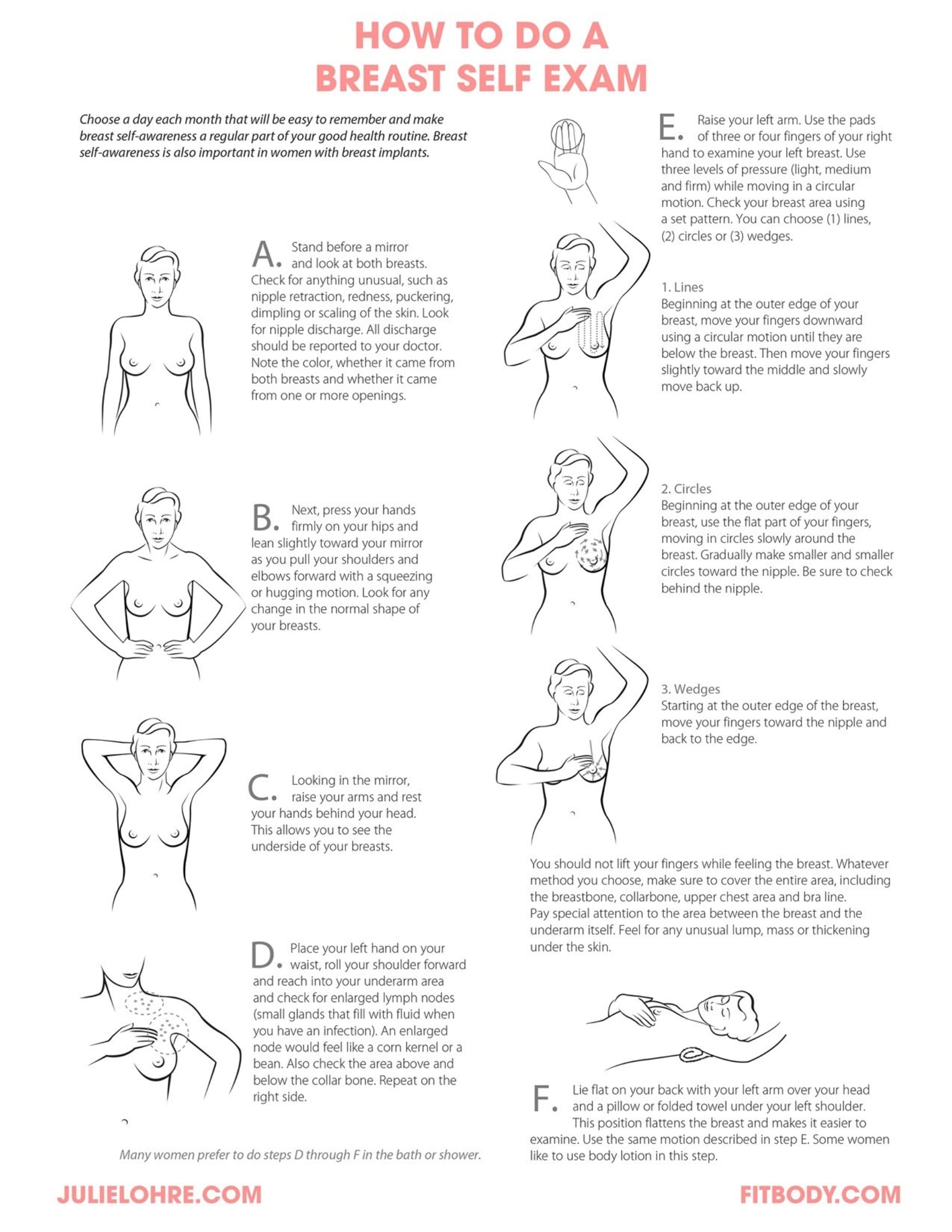
RESULTS AND FOLLOW-UP
When should I call my doctor about something I find in my breast self-exam?
If you find a lump or any other worrisome changes, stay calm. Most self-exam findings are not signs of breast cancer. But you should still call your healthcare provider if you notice any:
- Change in the look, feel or size of the breast.
- Change in the look or feel of the nipple.
- Dimpling or puckering of the skin.
- Lump, hard knot or thick spot in the breast tissue.
- Nipple discharge.
- Nipple or other area pulling inward.
- Pain in one spot that won’t go away.
- Rash on the nipple.
- Swelling of one or both breasts.
- Warmth, redness, or dark spots on the skin.
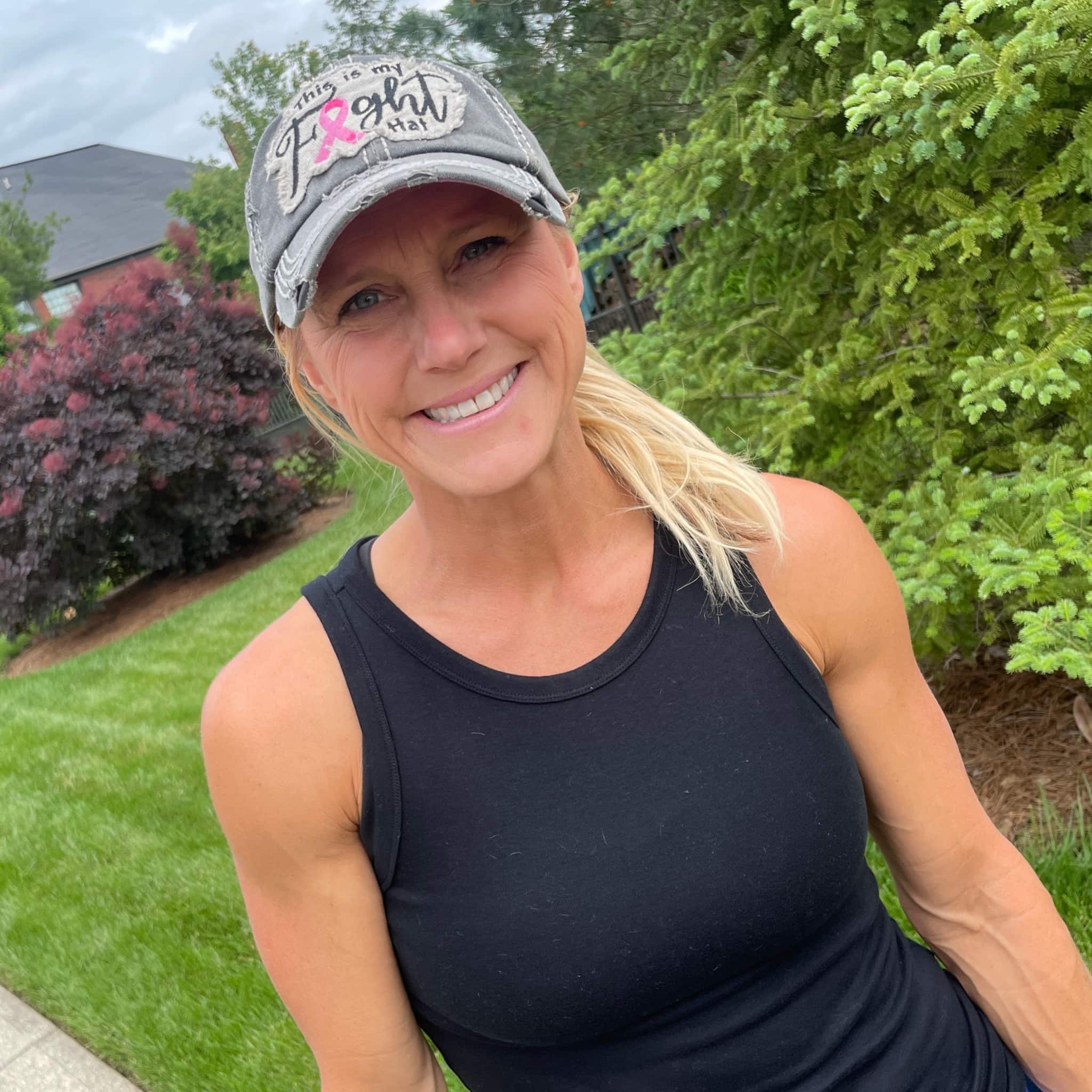
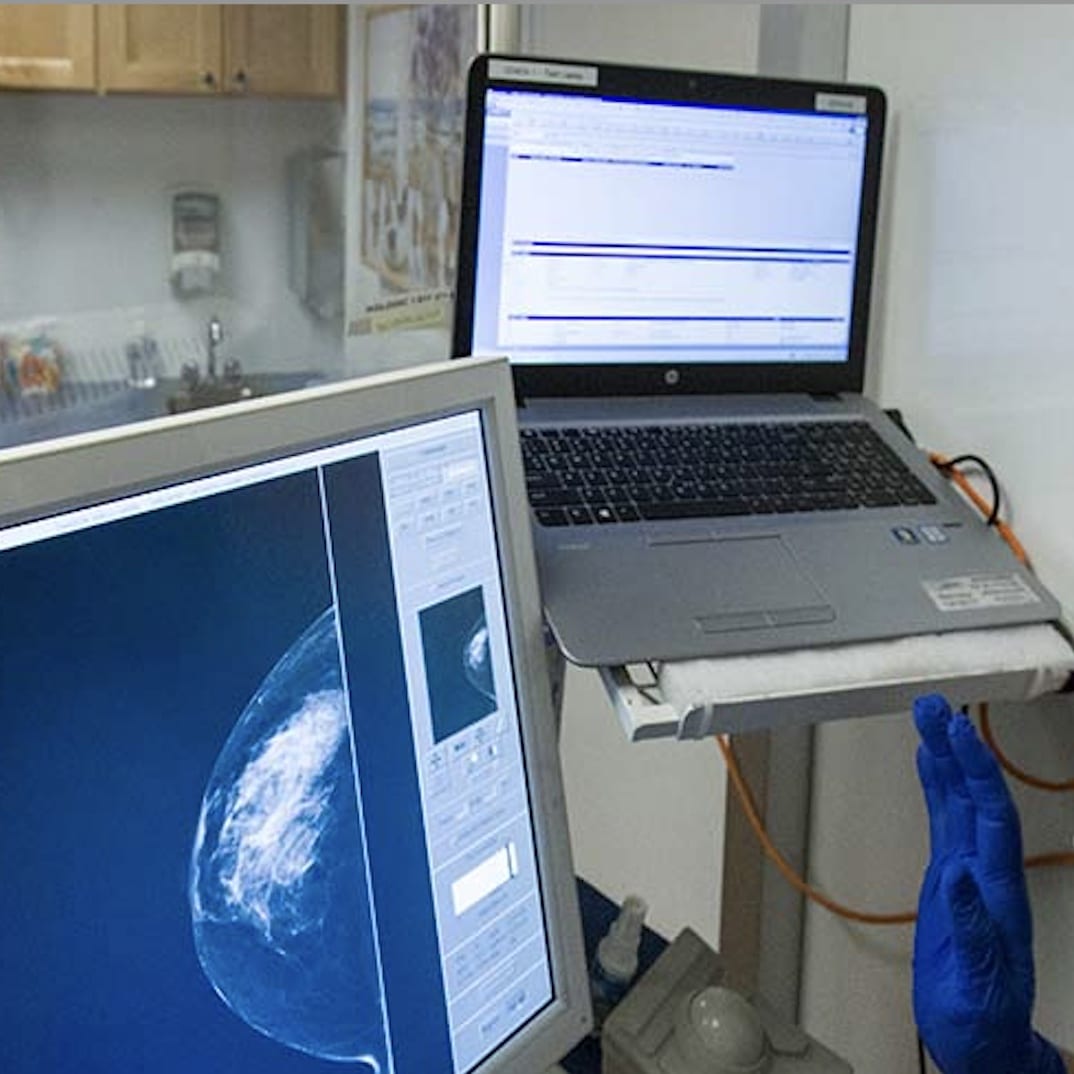
Read More About My Breast Cancer Journey
Performing a monthly breast self-exam will help you maintain breast health and detect early signs of disease. You can incorporate the steps of a breast exam into your regular routine, such as when you get ready for bed or take a shower. With each breast self-exam, you will become more familiar with your body. When you know what’s normal for you, you will be more aware when changes occur.
Many hospital clinics and healthcare provider offices focus on breast cancer awareness services, including breast cancer screening. You can help your healthcare team maintain your breast health by taking a few minutes once a month to conduct a breast self-exam.
Breast self exams are not a replacement for mammograms or any other diagnostic screening. They are IN ADDITION to normal care and screening.
I am not a doctor or medical professional and the advise and information given here or elsewhere on my website is only for reference and individuals should seek medical advise of their own physicians.
Find out more about Online Personal Training with Julie


